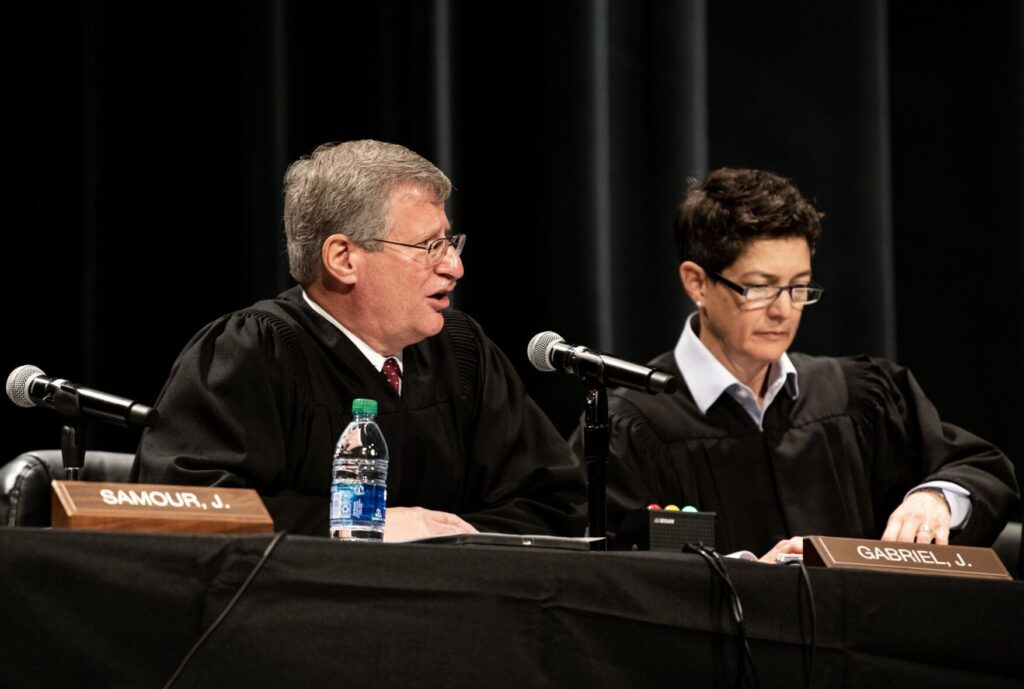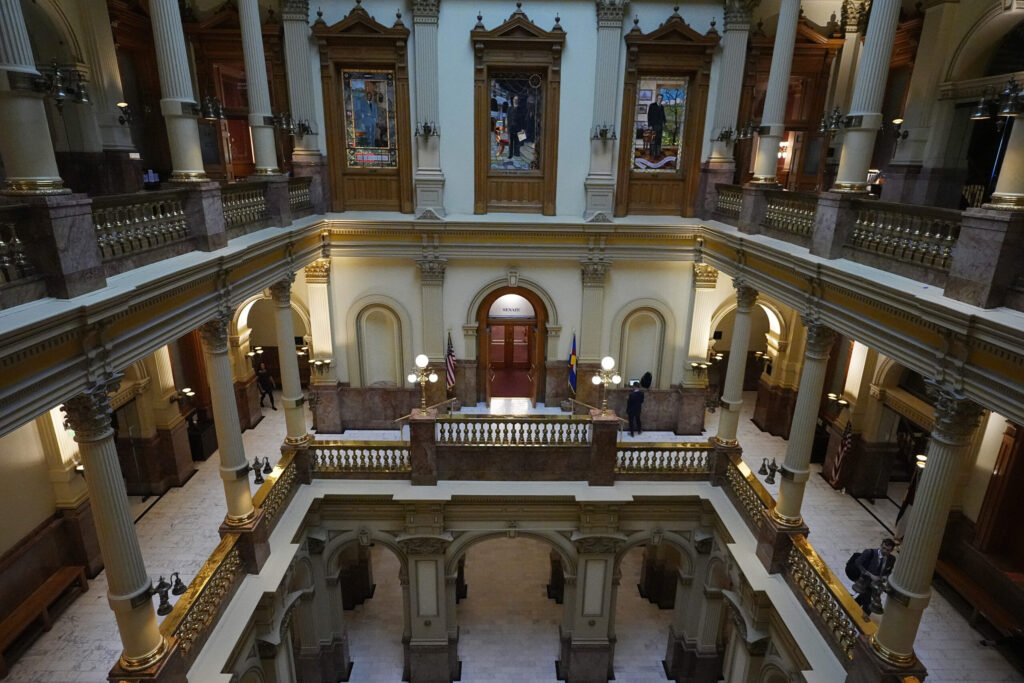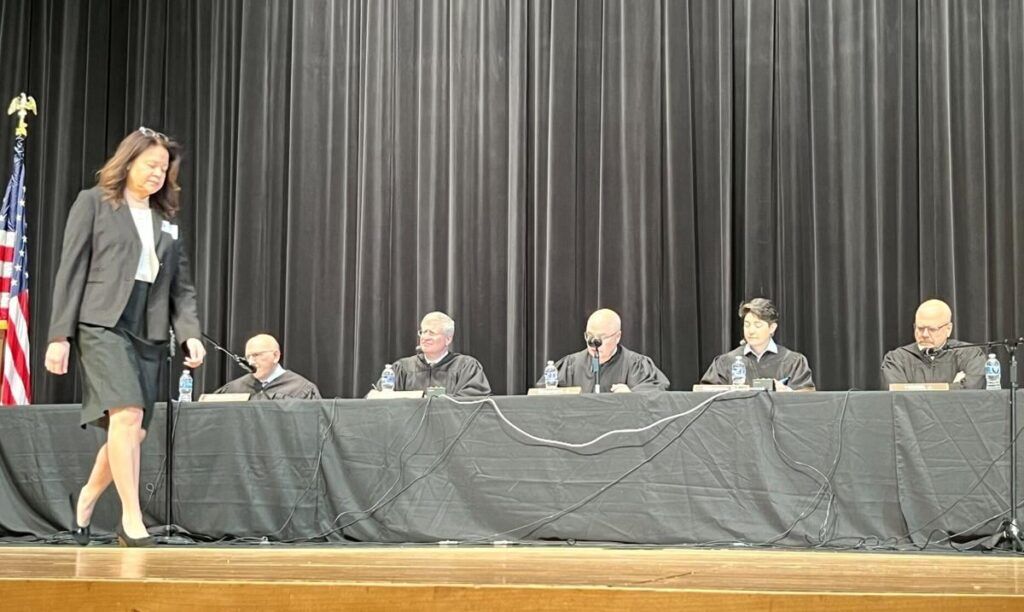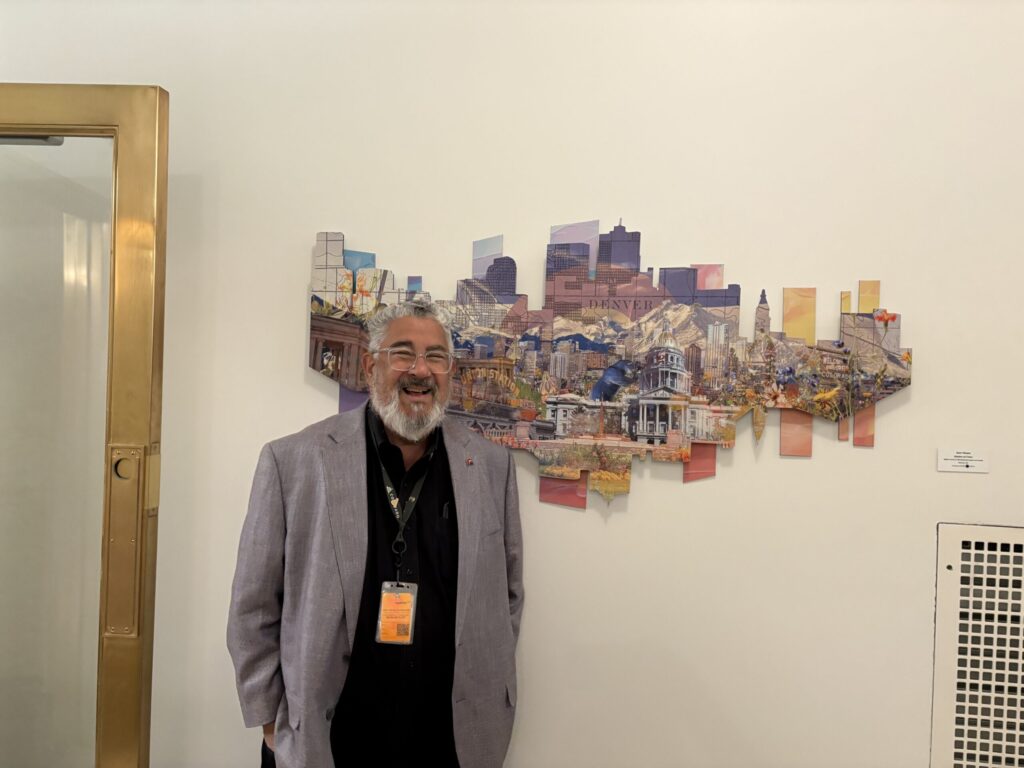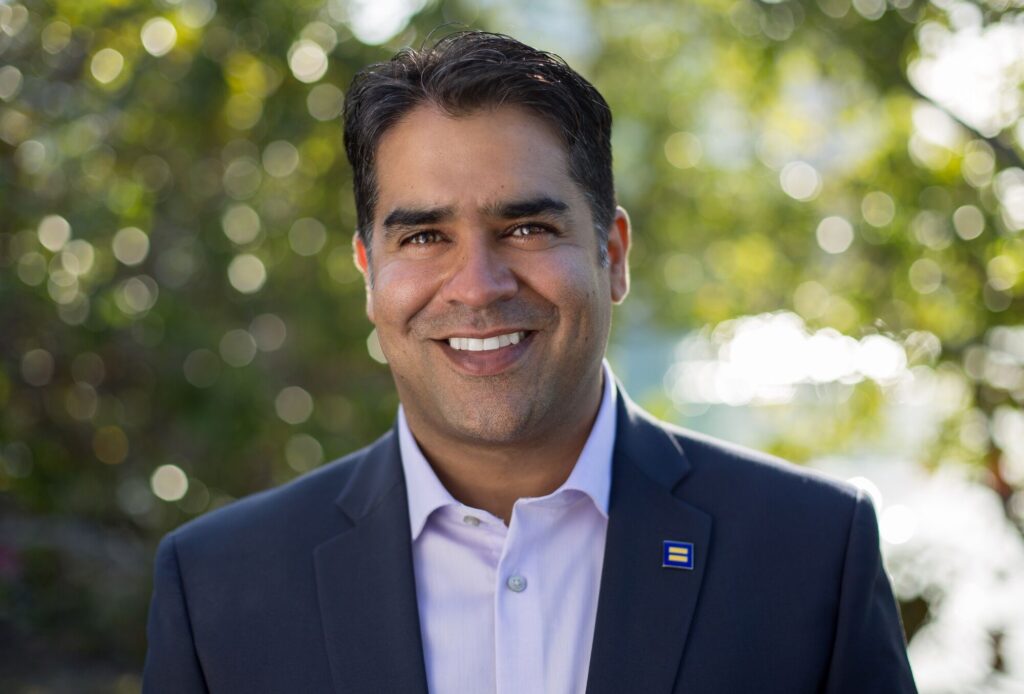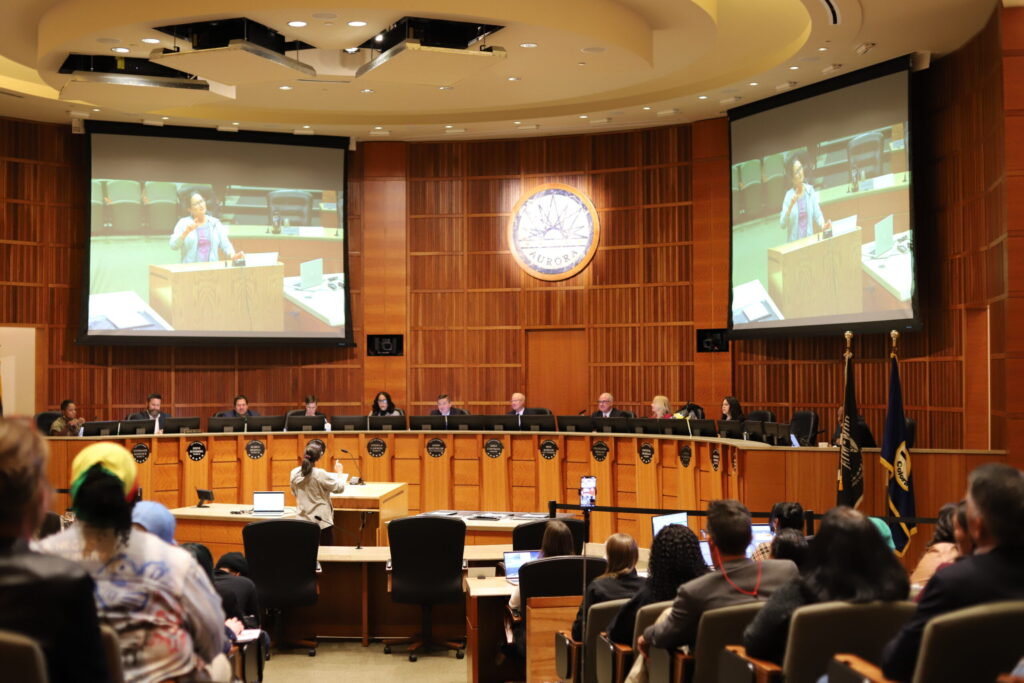Justice Gregory Hobbs reflects on water, justice
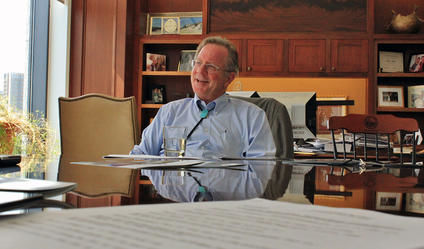
“Get a tie. A real tie!”
For Coloradans who follow the stylings of Gov. John Hickenlooper, that might sound familiar. But that’s advice Justice Gregory L. Hobbs got the day he was appointed to the Colorado Supreme Court.
After almost two decades on the bench, the Supreme Court will lose its most respected expert on water law. Hobbs steps down on Aug. 31.
When Gov. Roy Romer decided to appoint Hobbs to the state’s highest court in 1996, it was the realization of a career-long goal for the attorney. But Hobbs jokes a little about the day he learned he would be Romer’s pick.
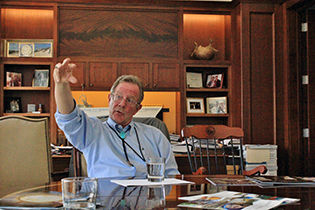
He met with Romer, who had a tall stack of recommendation letters on his desk. Hobbs was one of three nominees for the Supreme Court vacancy, and would be among the seven justices Romer appointed during his 12 years in office.
When Romer asked Hobbs why he should appoint him to the Court, Hobbs says he replied that he holds the institutional knowledge of the various panels that work on natural resources issues. He’d drafted bills for the Legislature, and he’d worked with citizens’ boards and commissions, where he had to work collegially. That’s what Romer wanted: someone who knew how to get along with what was then a fractious group.
“You’re a flawed candidate,” Romer joked with Hobbs, referring to the stack of recommendations. Among those letters were commendations from Jim Martin, now at the Beatty & Wozniak firm and a former director of the Colorado Department of Natural Resources. Hobbs worked with Martin when Martin was on the staff of Sen. Tim Wirth, collaborating on a landmark 1993 wilderness bill. Romer waved Martin’s letter at Hobbs. “That’s the one,” the governor said.
Even with that support, though, Hobbs recalls that environmentalists were a little concerned about his nomination, given some of his past clients. “I’m not saying he exercised a freebie on me, but he put me on my guard,” Hobbs said.
And then the governor asked for two other things: “Don’t put any poetry in your opinions,” as some judges are fond of doing. (Hobbs, a published poet, agreed). Second, Romer said, “Go home and get a tie. A real tie.” (Hobbs usually wears a bolo.)
Hobbs’ first legal work in Colorado came when he served as a clerk to Judge William Doyle on the 10th Circuit Court of Appeals. Hobbs knew even back then he wanted to be a judge, and Doyle, who has been a Colorado Supreme Court justice, encouraged him. Doyle advised Hobbs to set his sights on the state’s highest court. “They do everything over there,” Doyle said.
“You can’t ever guarantee that you’ll get there,” Hobbs conceded, but that became his goal.
He briefly practiced with a private firm in San Francisco but the legal work, which involved insurance claims, wasn’t for him. After nearly a year of long commutes, he was ready to try something else.
Getting in on ground floor of environmental decade
Asked where his abiding interest in water comes from, Hobbs says, simply, “Luck.”
The Environmental Protection Agency and a host of federal air and water quality laws were in their infancy while he was in law school. “I got in on the ground floor of the environmental decade,” he said.

After San Francisco, Colorado beckoned again, and Hobbs wound up at the EPA, working on air quality issues for three states. What he learned from that experience, he said, was that the “front-line attorneys” on the air quality issues worked in the attorney general’s office. The action for a young attorney was with the attorney general, he said.
That’s where he headed next. The department was in the midst of a big reorganization. Prior to 1975, attorneys for each state agency were based within their agencies. The reorganization brought all the attorneys into the attorney general’s office, and Hobbs was asked to take on the natural resources area, including water quality, water rights, and air quality issues.
He came in with a storied class that included Attorney General J.D. McFarland and assistant attorney general Jean Dubofsky, who hired him, and would later sit on the Colorado Supreme Court.
Hobbs speaks of Dubofsky with near reverence, extolling her classical legal skills, both as an attorney and as a justice. “She had it all,” he said. But one of her best decisions, Hobbs maintains, was to leave the court when her husband was appointed to the Court of Appeals. Colorado and the nation has been better for it, he said, pointing to landmark cases Dubofsky litigated, including Romer v. Evans, the lawsuit filed after Colorado voters approved the anti-gay rights ballot measure Amendment 2 in 1992. The case went all the way to the U.S. Supreme Court, where Amendment 2 was overturned.
After serving at the attorney general’s office, Hobbs’ career as the water law expert got its next big push when he joined Davis, Graham and Stubbs in 1979. His biggest client was the Northern Colorado Water Conservancy District, the largest water district in the state. “I never expected to be working for a public entity,” he said. “How could you want for a better water client?”
After Davis, Graham and Stubbs, Hobbs opened his own firm with two other attorneys. Then came the opening he had pursued for more than two decades: the Colorado Supreme Court.
His first mentor on the high court was Chief Justice Anthony Vollack. “I really lucked out with that,” Hobbs said. Vollack, a former state senator, and a former “member of the club,” was an expert on getting what he wanted from the General Assembly.
Vollack, and Hobbs were right on the cusp between the generation of the three justices who hadn’t yet unpacked their computers and still dictated opinions to legal secretaries, and those who were more computer-savvy.
Hobbs’ first success as a justice might have been choosing his law clerks. His first law clerk started out as a secretary to another justice, but Hobbs discovered she had a law degree and he hired her as his law clerk. That law clerk, Barbara Brohl, is now the executive director of the Colorado Department of Revenue, a career path Hobbs notes with pride.
He speaks fondly of the current slate of justices. “This has been very collegial and hands-on,” Hobbs said.
How government works, and how it doesn’t
Dubofsky once told him that a justice ought to have some background on how government works, and how it doesn’t.
The current make-up of the court bears that out, he said. Four justices are former assistant attorney generals, and three came from the district courts. “It’s pretty interesting that what Jean said about having a background in government is proven by this current composition of the court,” Hobbs said.
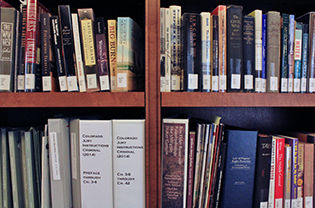
He explained the process for voting on a case. Nothing is voted on until all seven justices are ready to vote. Hobbs said if a justice isn’t ready, and needs more time for thinking, writing and forging the best opinion, that justice can ask for a “pass,” and the vote is delayed.
“I’ve always tried to write for 7-0 but I’m satisfied with 4-3,” he said with a smile.
What stands out on cases? How hard it is, Hobbs said. It’s the avalanche of reading, the travails of writing to expert colleagues, and vetting the writing with the law clerks.
“We think we have a good draft, propose it and six other people have something they want you to consider,” he said, laughing. “We all see it a little bit differently. We’re working with language. Words are the coin of the realm.”
Hobbs, ever the teacher, said good opinions are written in an active voice. “If you can’t take the rule of law and put it in an active sentence how can you expect the General Assembly and the clients or lawyers to understand it?”
Every justice writes in every field, Hobbs said. He stands out on water law because he’s practiced it and knows the nuances. “I write more in-depth when I’m writing an opinion. When you write in someone else’s expert field, like criminal law, you tend to be a little more tentative. You have more resonance in a majority opinion if it’s a field you’ve practiced in.”
But with 60 percent of the cases the Court handles involving criminal law, he said, “We’re writing in everyone else’s expert field. We’re the last of the general practitioners.”
Controversy over McInnis water essay
While Hobbs has played a part deciding controversial cases for decades, his name emerged at the center of one of the state’s biggest political controversies in 2010, when former U.S. Rep. Scott McInnis was running for governor. After leaving Congress, McInnis had been engaged by the Hasan Foundation to write a series of articles, and it turned out that one plagiarized a 20-year old essay written by Hobbs before Hobbs was on the Court. McInnis blamed his research assistant, Rolly Fischer, for the failure to attribute Hobbs’ work, but political neophyte Dan Maes wound up beating McInnis in the Republican primary. McInnis later said he apologized to Hobbs for the error.
The entire situation, Hobbs told The Colorado Statesman, was a tragedy, and “the darndest thing I ever saw.”
Hobbs said he initially heard about the plagiarism from the court’s public information staff, who showed him McInnis’ article. He told them it was his writing, from when he worked for the Northern Water Conservancy District, and it had been published by the Colorado Water Congress. At the height of the controversy, Hobbs said, he turned down an interview request from the Denver Post, but no one else has asked him to talk about it since. “I didn’t need to get into it, and the press was interviewing McInnis and Fischer,” he recalled.
But had Fischer or McInnis asked for permission to cite the article with proper attribution, Hobbs said he would have granted it. “Anyone who’s ever asked to quote my work gets my permission,” he said.
McInnis was cleared of any wrongdoing in the matter by the Attorney Regulation Counsel, which determined it was Fischer who bore responsibility.
‘Get on top of water’
“Every generation of Colorado justices has to get on top of water,” Hobbs said. He acknowledged it isn’t the specialty of the justice who replaces him, “but the court will go on, as we do with all bodies of law.”
“My maturation as a justice came in writing water opinions,” Hobbs said. One of the biggest opinions was the Fort Lyons case, which involved 100 miles of canal, and an investor group that bought one-third of the shares of the canal. They went to the water court for a change of use order, but without specifying what the new use would be. “We rediscovered [through that case] that Colorado water law is anti-speculation,” Hobbs noted.
The most important thing Hobbs wishes people understood about water is how Mother Nature and legal constraints control how much water Colorado has for its own use. Hobbs explained that two-thirds of the water produced in Colorado, through rainfall and snowpack, go out of the state to 18 downstream states and Mexico, under these legal agreements.
Hobbs, ever the teacher, said it’s no accident that Colorado’s borders form a trapezoid. It was a decision by the Union Congress during the Civil War to make sure the whole of the Continental Divide, and the four major rivers, was in one state. It served as a barrier against the Confederacy and against Kansas, a pro-Confederacy state. Colorado’s borders ended the wagon train routes for the Confederacy to Colorado’s mineral riches, especially gold, Hobbs said.
What’s next for Hobbs? He said he’s talking with the University of Denver and Colorado States University about teaching advanced seminars in water law.
He also hopes to be more involved with the statewide water plan, which released its second draft earlier this week. Hobbs, a member of the education committee for the plan, wants to work on educational outreach.
‘Failed Ph.D.’ devoted to education
Spend some time with Hobbs, and you find a man deeply committed to the law. But he’s also deeply committed to education. He jokes that he’s a “failed PhD.” He originally intended to pursue a doctorate in Latin American history, but dropped out after a semester because it would have taken too long and he didn’t find it interesting enough.
What he finds interesting these days: in addition to his duties as a Supreme Court Justice, Hobbs serves as vice-president of the Colorado Foundation for Water Education, working on the Foundation’s quarterly magazine, Headwaters. It’s been a unique situation, Hobbs said, to be able to teach and write in that way under the judicial canon of ethics.
If you walk around the first floor of the Ralph L. Carr Justice Center with Hobbs, you’ll see another sign of his passion for education, an interactive display with state-of-the-art tools to teach children of all ages about the law. Hobbs delights in showing off the education area, pointing out his favorite sections, asking what visitors know about important decisions in Colorado law. He does all of this with a twinkle in his eye, clearly enjoying the experience of sharing his knowledge.
“There’s always something interesting to do, like working on educational outreach for the water plan, if I can help,” Hobbs said. “Coloradans like a good story.”
– info@coloradostatesman.com




